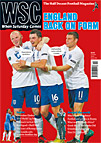 Paul Giess looks at the legacy of the summer's World Cup for the hosts and the future prospects for the national league
Paul Giess looks at the legacy of the summer's World Cup for the hosts and the future prospects for the national league
The surge of optimism experienced across South Africa during the 2010 World Cup having died down, daily life has returned its normal mix of strikes, unpopular government legislation and continued difficult economic conditions. At the start of the new football season there are still a handful of well-worn flags flying from cars and houses as residents cling on to memories of the few weeks when their divided nation came together as one. It remains to be seen if this will spill over into any renewed support for the 16 teams that will battle out the 2010-11 Premier Soccer League (PSL).
Although there may be 30 million football fans around the country they do not turn up for league fixtures on a regular basis. The decision by the PSL to double ticket prices for the new season will not help and neither will the fact that the shiny new grounds are not owned by the clubs and remain geographically distant from the core of the football support in the townships.
Cape Town Stadium and Durban’s Moses Mabhida both hosted games in the opening round of fixtures but it is not certain that their locally based clubs will be able to afford to hire the venues on a regular basis. Soweto giants Orlando Pirates and Kaiser Chiefs have huge support countrywide and can be expected to sell out venues in any city, but the rest of the clubs have more modest and fickle support bases.
The opening day was a huge success, nonetheless, with Cape Town Stadium hosting a double header on a Friday evening. Newly promoted Vasco da Gama from Cape Town took on Orlando Pirates and ran them desperately close before succumbing 2-1. In the second game established Cape side Ajax Cape Town beat Bloemfontein Celtic 2-0.
The demand for tickets was such that the top tier of the stadium had to be opened after original plans had been for just two levels to be used. For many of the crowd it was their first chance to see the new stadium, as ticket prices, even with the increase, were far lower than what was charged for the World Cup. The result was an excellent attendance, including a healthy mix of all races from across the city. Many may have come just to marvel at the new stadium that they now see dominating the city skyline, and both the visiting sides happen to have large fanbases. In a few months’ time, a mid-table clash between Ajax and some of the PSL’s other modest teams may not generate such interest but this was a promising start.
Despite the logistical and price concerns, the main issue that the South African public have with their football is its quality. There are far too many basic mistakes and far too few goals in PSL games. One big positive for the new league season is that established Bafana Bafana stars such as Katlego Mphela and Siphiwe Tshabalala remain in South Africa despite months of being linked with clubs across Europe. As modest as the hosts’ performance was, the World Cup football converts have taken to the efforts of the national team and discovered a new-found respect for footballers who, like elsewhere, carry a negative image of being overpaid and unprofessional. Now Tshabalala’s opening World Cup goal against Mexico is hardly ever off the local sports channels and Bafana shirts carrying his name are popular attire.
One thing the World Cup did demonstrate was that the country could work to a timetable and administer sporting events effectively. The hope that these new-found organisational skills would roll over to the new season has already been dashed. Moroka Swallows made signings from the US and Zimbabwe in the two months prior to the season starting, yet the day before their first competitive game they still were waiting for the players’ work permits and could not include them in team planning. Bidvest Wits had their opening home fixture rescheduled for three different grounds by the PSL during the week prior to kick off.
It is a familiar story for football fans here and sets the scene for a season just like any other, where mostly small crowds struggle to find the grounds where they can watch mostly average games. The big difference is that just occasionally they will now be hosted in some of the world’s most impressive football stadiums.
From WSC 284 November 2010